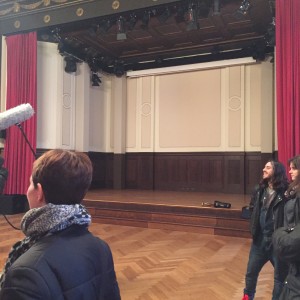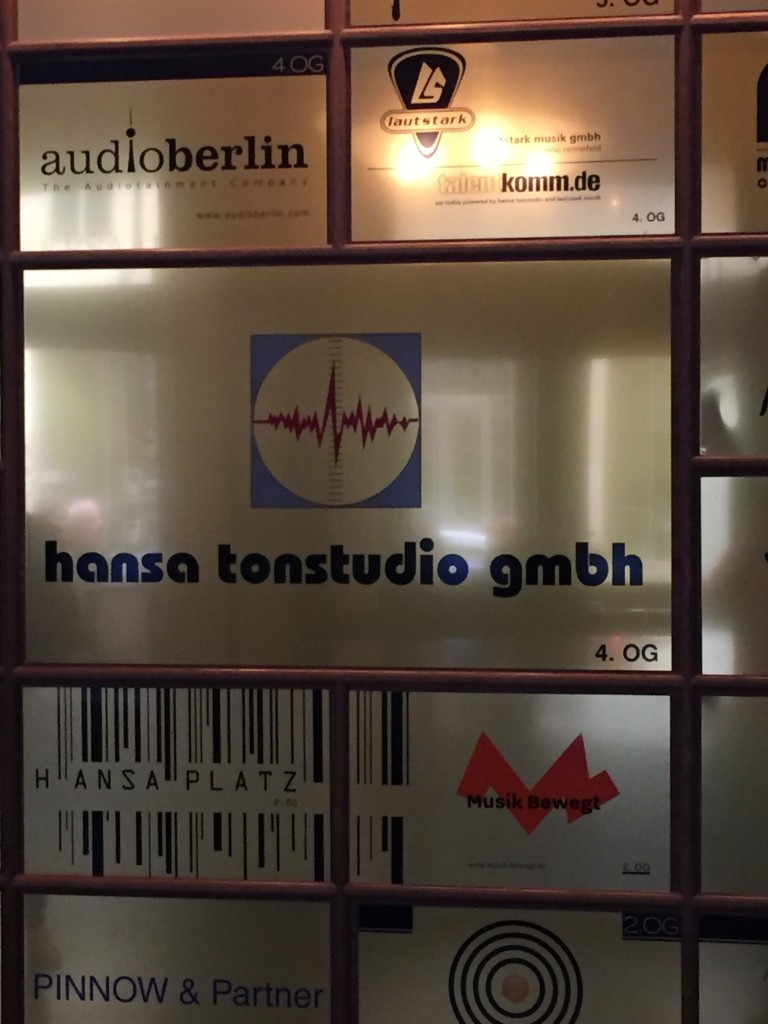Building up to Heroes – Iggy Pop’s Lust For Life
In May of 1977, The Bowie/Pop team began to record the Iggy Pop follow-up album to The Idiot (Seabrook 146). Prior to working in the studio, Bowie and Iggy along with guitarist, Ricky Gardiner, had already conceived ideas for the songs, ‘The Passenger’ and ‘Lust For Life,’ which Bowie had originally written on a ukulele (Seabrook 146). The album was then recorded and mixed at Hansa Tonstudio, and was the first of Bowie’s and Iggy’s to be “fully realized” in Berlin (Seabrook 146-147/152). Due to creative differences, Bowies role on the album was reduced – he was still a co-author of seven of the nine tracks, but the only instrumental contributions he made was on keyboards and backing vocals (Seabrook 147).
Listen to ‘The Passenger’ here:
“Heroes”
https://www.youtube.com/watch?v=Tgcc5V9Hu3g
“Heroes”. (1977)
The second album in the Berlin Trilogy, Heroes, is said to have expressed the injustice of life in Berlin. In the title track “Heroes”, the lyrics tell a story of two lovers from opposite sides of the Berlin Wall.
“I can remember
Standing by the Wall
And the guns shot above our heads
And we kissed, as though nothing could fall
And the shame was on the other side
We’re nothing, and nothing will help us
Maybe we’re lying, then you better not stay
But we could be safer, just for one day…”
Bowie’s time in Berlin influenced his work; his writing often tried to convey the inequity and imprisonment that citizens of Berlin felt due to the Wall. “Heroes” and the rest of his songs perfectly captured an entire generations emotions. During this time of seclusion in the late seventies, many young Berliners were pulled to Bowie’s music because they could relate to and understand it. Bowie, in a way, was the rebel and escape that Berliners needed (Mastropolo).
Recording at Hansa Tonstudio
For “Heroes”, Bowie recorded in Hansa’s largest room, which was called “Studio Two,” or “The Meistersaal” (Schmied). Since the studio was so close to the wall (almost surrounded), it was nicknamed ‘the hall by the wall’ (Schmied). The building itself was constructed in the Weimar-era, and was turned into a music studio in 1961 (Schmied). The reason why this room was of interest was because of how vast it was. The space of the room created much-wanted “natural reverb” (Meyer). An example of this can be heard on
the song “Heroes” – in the hall, they set up three separate microphones: One of the microphones was in front of Bowie, and the other two were as much as 20 or so feet away in different places. The furthest two microphones were hooked up to a “noise gate,” so that they would only become active when he reached a certain frequency” (Meyer). This effect can be heard especially toward the end of the song, when his voice escalates in volume (see lyrics above).
The Inspiration of The Berlin Wall
Author Thomas Jerome Seabrook, states that, due to all the possible references to his own life in the lyrics of songs like ‘Beauty and the Beast,’ ‘Blackout,’ and ‘Joe the Lion,’ Bowie is writing about himself, but also “the city he would subsequently characterize as being, ‘made up of bars for sad people to get drunk in’“ (171).
Hansa’s in-house engineer, Eduard Meyer, stated that inspiration for some of the lyrics on the song “Heroes” came to Bowie as he was sitting in the control room at Hansa. Bowie, looking out the window at the Wall, saw two people walking along the Wall, and then they embraced each other. These two people that Bowie saw was his producer/engineer, Tony Visconti, and backup singer Antonia Maass. Bowie didn’t release this information for a long time to the public, because he didn’t want word to get back to Visconti’s wife in America (Meyer).
The Continuing influence of Brian Eno
“Heroes” is a continuation of the collaboration between Brian Eno and David Bowie. His contributions to the album, besides constantly encouraging Bowie think about taking his music in different directions, are numerous. For example, Eno spent a week creating the “multi-layered wave of oscillating EMS Synthi A that overwhelms the title track” (Seabrook 163). The album was very much like Low, where the final album seemed to be divided – side A was rock, and side B contained ambient instrumentals. On “Heroes”, the Bowie/Eno team spent two weeks composing the B-side instrumentals for the album (Seabrook 169).

The “Meistersaal” – This is the studio where Bowie recorded “Heroes”. Personal photograph by author. 2016.
Fun Facts about the album
- Most of the rhythm tracks on “Heroes” are first takes or “rehearsal tracks” (Seabrook 162).
- Robert Fripp of the band King Crimson plays guitar on the album: To create the sounds in “Heroes”, Fripp plugged his guitar into Brian Eno’s EMS Synthesizer, and played as Eno manipulated it (Seabrook 166).
- “Heroes” was the only album in the whole trilogy to be fully conceived in Berlin (Seabrook 171).



